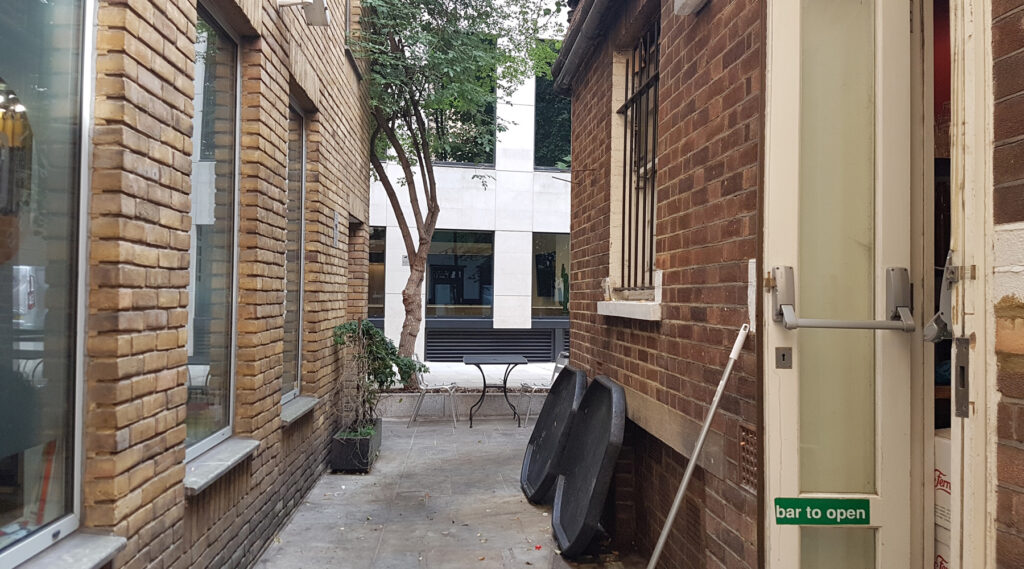This is an alley close to St Paul’s Cathedral that owes its origins to a long lost churchyard.
The churchyard belonged to Saint Vedast-alias-Foster church, which was founded in 1308, rebuilt in 1662, and so badly damaged by the Great Fire of London just a few years later that it had to be entirely rebuilt. It was also gutted during WWII and later repaired.
Back in Tudor times, though, there was a large churchyard to the north of the church, and as the area built up, a narrow alley emerged between the churchyard and the surrounding buildings.
That’s the origins of Rose and Crown Court.
The origins of the alley’s name are harder to pin down, but it shows up with that name in John Rocque’s 1746 map of London, by which time it seems that the churchyard has vanished under buildings.
It’s reasonable to assume that the alley’s name comes from a pub that would have been by the entrance, although lists of early pub names on Foster Lane don’t include the Rose and Crown, although that could be an omission. However, there is an indirect reference in the Old Bailey, when a policeman reported in 1849 that he saw an accused burglar of climbing “over a wall in the rear of the Rose and Crown”. However, that seems to be a pub a couple of doors down from this alley — so maybe one took the name from the other or the other way around.
It’s been difficult to pin down the exact origins though.
By the turn of the 20th century, the alley is just that – a short alley leading off Foster Lane to a dead-end and of use mainly as back door entrances to the surrounding buildings.
However, the war that devastated the church also flattened most of the buildings around, leaving the dead-end alley suddenly getting a lot brighter, as all the buildings around it were destroyed, except one – the entrance to the alley.
You can see what the alley looked like in 1945 here.
When the offices behind were rebuilt, the alley was extended a bit and gained a corner to curve around the side of the new buildings, giving it the layout it has today.
What we have then is the remains of a very old alley that leads to a modern courtyard space that was created when the post-war buildings were erected, so it’s rather brighter and more interesting than it was for most of its existence.













Leave a Reply